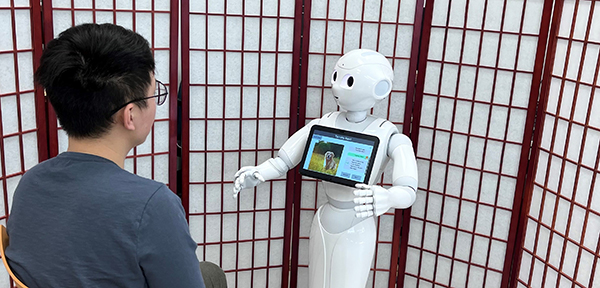 By Kathy Williams.
By Kathy Williams.
As the number of Americans living with Alzheimer’s disease and related dementia continues to increase, so does the need for caregivers—a need that can sometimes place a burden on family members and society.
Professor Xiaopeng Zhao is working to combat those burdens by using robotic caregivers to comprehend, assist, relieve, and evaluate—CARE—for patients with Alzheimer’s disease, and his efforts are being backed by the National Institutes of Health’s National Institute on Aging. The four-year NIA award Zhao recently received will help fund his project to exploit the autonomy and intelligence capability of a humanoid robot to care for patients with Alzheimer’s disease.
“Improving the care of patients with Alzheimer’s disease and related dementias is a national challenge,” said Zhao. “The proposed system could effectively bridge the care gap in our society, offering unprecedented potential for improving the quality of lives of both the patients and their caregivers.”
The robotic CARE system can detect the emotion and cognitive state of the patient, communicate, and collaborate with the patient to accomplish basic activities of daily living such as meal preparation, laundry, and eating. They also help caregivers by reducing their levels of burden and stress.
“It’s important to understand that the system will not replace the caregivers but rather supplement the caregivers while providing companionship for the patients, since the system will learn to automatically assess the patient’s cognitive state to better understand and respond to the patient’s needs,” said Zhao.
He has already developed and tested prototype human-robot interaction functions using one of his three robots with a small group of patients, caregivers, and clinicians, with positive feedback. The functions he tested included small talk, singing, dancing, mimicry, mindfulness practice, and reminiscence activities.
“My goal over the next four years is to expand and improve the interaction functions and develop a robotic CARE system that is capable of better perceiving the world and providing reasonable human-like feedback to these patients,” said Zhao. “I want these robots to be life-changing.”
Collaborators and co-PIs on the project are Professor Hairong Qi in the Min H. Kao Department of Electrical Engineering and Computer Science, Associate Professor Joel Anderson in UT’s College of Nursing, and Professor Ruth Lopez of the MGH Institute of Health Professions. Monica Crane, founder and medical director of Genesis Neuroscience Clinic, is a collaborator.